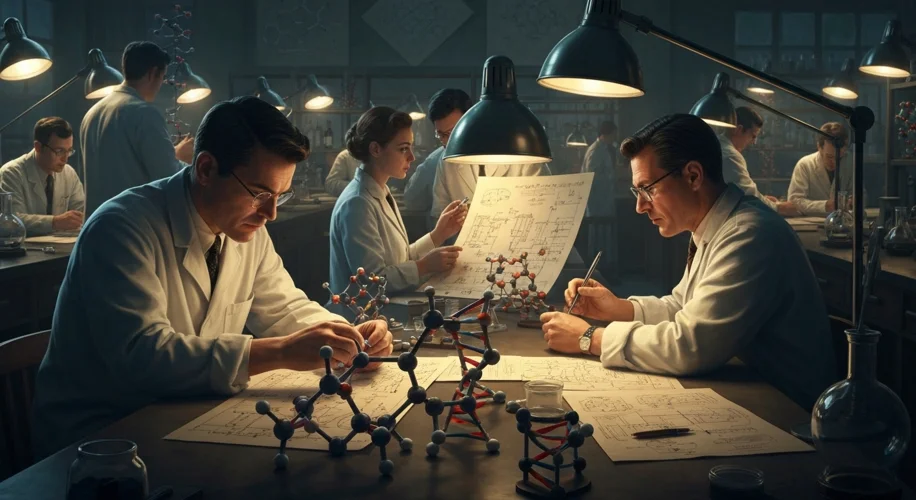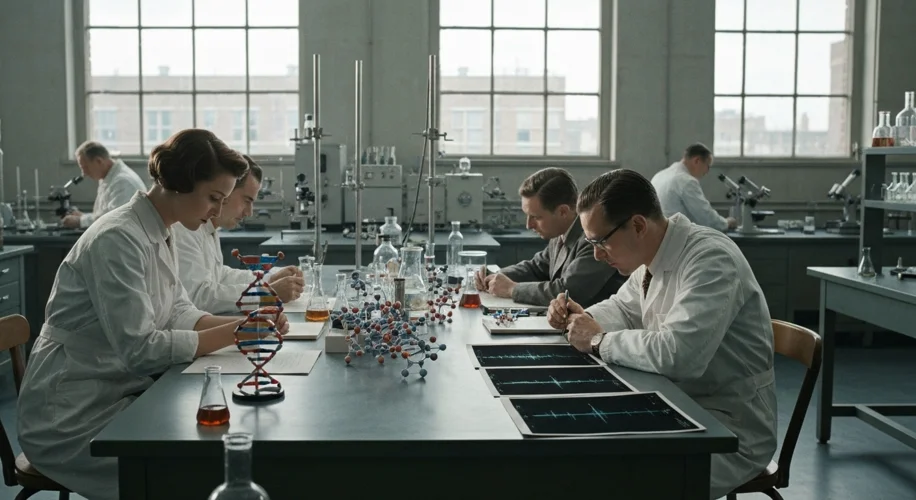In the grand tapestry of human history, certain threads, though invisible to the naked eye, have woven the very fabric of our understanding. One such thread, finer than any silk, yet stronger than any steel, is deoxyribonucleic acid – DNA. Its discovery and deciphering represent not just a scientific milestone, but a profound unveiling of life’s most fundamental secrets.
For centuries, the nature of heredity remained shrouded in mystery. How were traits passed from parent to child? What invisible force carried the blueprints of life? Early scientists, armed with little more than keen observation and rudimentary microscopes, began to probe these questions. In the mid-19th century, a Swiss physician named Friedrich Miescher, working in a laboratory in Basel, made a peculiar discovery. While studying the chemical composition of white blood cells, he isolated a novel substance from the cell nuclei. He noted its acidic nature and the high phosphorus content, a characteristic that set it apart from other known biological molecules. He christened this substance “nuclein,” later realizing it was the nucleic acid we now know as DNA.
Miescher’s discovery was a lonely beacon in a sea of ignorance. The true significance of DNA remained elusive for decades, largely overshadowed by the prevailing belief that proteins, with their complex structures and varied functions, were the likely carriers of genetic information. It was a compelling argument; proteins were the workhorses of the cell, diverse and seemingly capable of holding the vast array of traits observed in living organisms.
However, the tide began to turn in the early 20th century. Experiments like those conducted by Frederick Griffith in 1928, involving the bacterium Streptococcus pneumoniae, hinted at something more. Griffith observed that a harmless strain of bacteria could be transformed into a virulent one by exposure to a substance from the dead virulent bacteria. He called this the “transforming principle,” a substance that could apparently alter the genetic makeup of an organism. The question remained: what was this principle?
Oswald Avery, Colin MacLeod, and Maclyn McCarty, building on Griffith’s work, set out to identify the transforming principle. In a series of meticulously designed experiments published in 1944, they presented compelling evidence that DNA, not protein, was the carrier of genetic information. Their findings were met with considerable skepticism, a testament to the entrenched belief in proteins as the genetic material. It would take more groundbreaking research to fully convince the scientific community.

The race to unravel the structure of DNA intensified. Scientists like Erwin Chargaff, by analyzing the base composition of DNA from various organisms, discovered that in all samples, the amount of adenine (A) roughly equaled the amount of guanine (G), and the amount of thymine (T) roughly equaled the amount of cytosine (C). This crucial observation, known as Chargaff’s rules, provided vital clues for understanding how the molecule might be structured.
The stage was then set for one of history’s most famous scientific collaborations, and perhaps one of its most controversial. In the early 1950s, at King’s College London, Maurice Wilkins and Rosalind Franklin were using X-ray diffraction to study DNA. Franklin, a brilliant and rigorous scientist, produced incredibly clear X-ray diffraction images of DNA, most notably the iconic “Photo 51.” This image, with its distinctive cross-shaped pattern, strongly suggested that DNA had a helical structure.
Meanwhile, at the Cavendish Laboratory in Cambridge, James Watson, an ambitious young American biologist, and Francis Crick, a British physicist, were working on building physical models of DNA. They had access to Franklin’s data (though the extent to which she willingly shared it is a matter of historical debate), and crucially, they incorporated Chargaff’s rules into their thinking. The combination of these insights – the helical structure suggested by X-ray diffraction and the base pairing rules – led them to propose the revolutionary double helix model in 1953.
The double helix, with its two intertwined strands connected by base pairs (A with T, and C with G), elegantly explained how DNA could store vast amounts of genetic information and how it could replicate itself. It was a moment of profound revelation, unlocking the very blueprint of life. Watson and Crick’s discovery, along with Wilkins’s contributions, earned them the Nobel Prize in Physiology or Medicine in 1962.
The elucidation of DNA’s structure was only the beginning. The subsequent decades saw an explosion of research into how this molecule functioned. Scientists began to decipher the genetic code – the set of rules by which information encoded in genetic material (DNA or RNA sequences) is translated into proteins by living cells. This monumental task involved determining which sequences of DNA bases corresponded to which amino acids, the building blocks of proteins.
The impact of these discoveries has been nothing short of revolutionary. From medicine, where DNA sequencing now underpins personalized treatments and genetic disease diagnostics, to agriculture, where genetically modified crops enhance yield and nutrition, DNA research has reshaped our world. It has allowed us to trace human migration patterns, understand evolution in unprecedented detail, and even bring back extinct species from the brink of oblivion, albeit in limited forms.
The story of DNA is a testament to scientific curiosity, meticulous experimentation, and the often-unseen threads of collaboration and competition that drive discovery. It reminds us that the most profound truths about life itself can be hidden within the smallest, most intricate of structures, waiting for the right minds to unlock their secrets.

